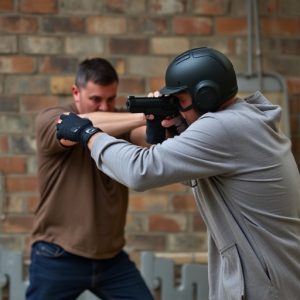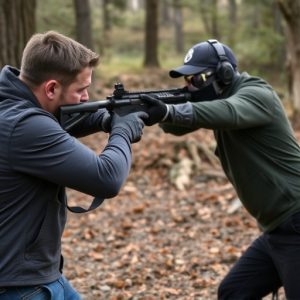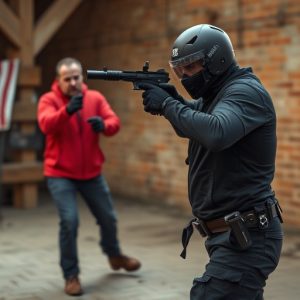Stun Gun Legalities by State: Finding Quality Within Price Range
Before buying a stun gun, research state laws governing their possession, carrying, and transporting…….
Before buying a stun gun, research state laws governing their possession, carrying, and transporting as regulations vary widely across the US. Understand that some states have permissive laws with minimal restrictions, while others require permits or registration. This state-by-state approach impacts not only ownership but also the price range of quality stun guns, which can start from around $50 to over $300. Informed decisions should consider power output, size, and features tailored to specific legal requirements.
“Unraveling the Legal Landscape of Stun Guns: A Comprehensive Guide. In an era where personal safety is paramount, understanding state-by-state regulations on stun guns is essential. This article navigates the intricate web of laws, offering insights into how different states classify and restrict these self-defense devices. We explore the price range for quality stun guns, comparing budget-friendly options with high-end models while ensuring compliance. Learn practical tips for legal purchasing and discover expert-recommended safety practices, empowering you to make informed decisions.”
- Understanding State Laws Governing Stun Guns
- – Overview of legal restrictions across different states
- – Types of stun guns and their classification under state laws
Understanding State Laws Governing Stun Guns

Understanding state laws governing stun guns is essential before purchasing one, as regulations vary widely across the US. Each state has its own set of rules dictating who can own and carry a stun gun, where they can be used, and how they can be transported. These laws often consider factors like public safety, personal protection, and the potential for misuse. For instance, some states allow stun guns with limited restrictions while others have stringent requirements, including specific age limits, licensing, and registration.
When considering a purchase, it’s crucial to research the price range for quality stun guns that align with your state’s legal framework. This ensures you invest in a device that not only meets your needs but also complies with local regulations. Staying informed about these laws empowers individuals to make responsible decisions regarding self-defense and keeps them within the boundaries set by their respective states.
– Overview of legal restrictions across different states

The legal landscape surrounding stun guns varies significantly across different states in the U.S., with each state having its own set of restrictions and regulations. These laws can impact who can possess, carry, and even the type of stun gun that can be purchased within their borders. Some states have relatively lenient rules, allowing individuals to carry stun guns without a permit, while others enforce strict guidelines requiring permits or registration.
When considering the purchase of a stun gun, it’s crucial to understand these state-specific restrictions. The price range for quality stun guns can vary widely, and this variation often aligns with the different legal classifications across states. Understanding these laws not only ensures compliance but also helps consumers make informed decisions when investing in personal safety equipment, considering factors like power output, size, and features that may be affected by state regulations.
– Types of stun guns and their classification under state laws

Stun guns, also known as electronic control devices (ECDs), come in various types and styles, each classified differently under state laws. These include jet-style stun guns, which resemble firearms and are often considered more powerful with a higher voltage output; baton-shaped stun guns that look like police batons; and compact, key-chain-sized stun guns that are easily portable. The classification often depends on the voltage, weight, and design features of the device.
When it comes to legality, state laws vary widely regarding stun gun possession and use. Some states have strict regulations, classifying all stun guns as firearms and subjecting them to similar restrictions, including background checks and waiting periods. Other states allow stun guns with certain voltage limits or without a permit. Understanding these classifications and state-specific rules is crucial before purchasing a stun gun, as prices for quality devices can range from affordable models under $50 to advanced options exceeding $300, depending on features and power levels.
In conclusion, navigating the legal landscape of stun guns varies widely by state, with restrictions ranging from strict licensing requirements to permissive regulations. Understanding these differences is essential for prospective buyers looking to purchase a stun gun within a specific state. Moreover, considering the price range for quality stun guns can help ensure compliance and peace of mind. Always remember to check your local laws before making a purchase to avoid any legal complications.


